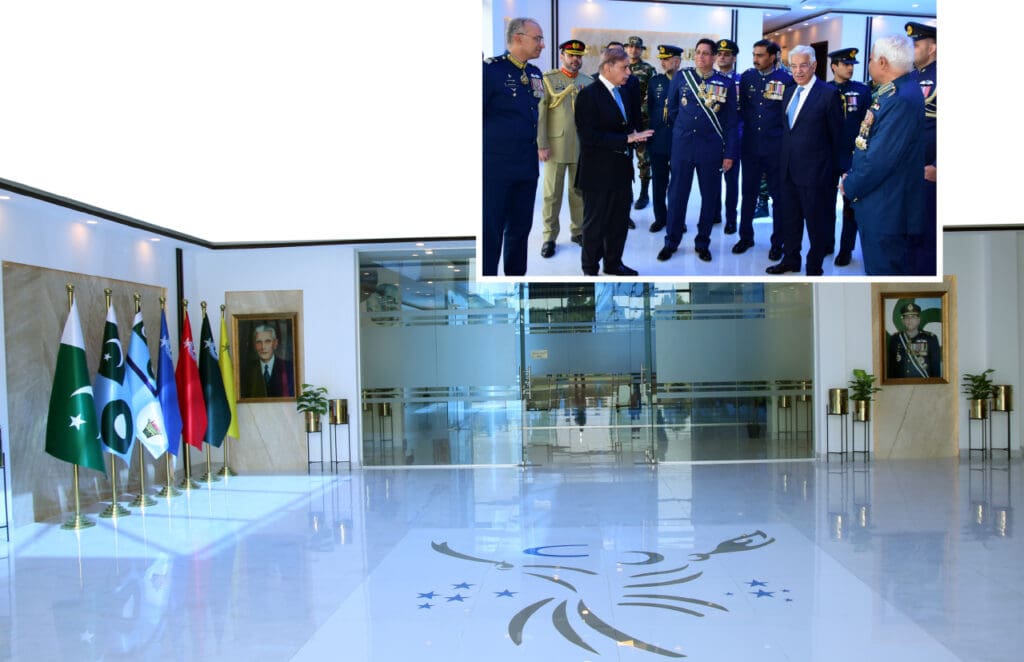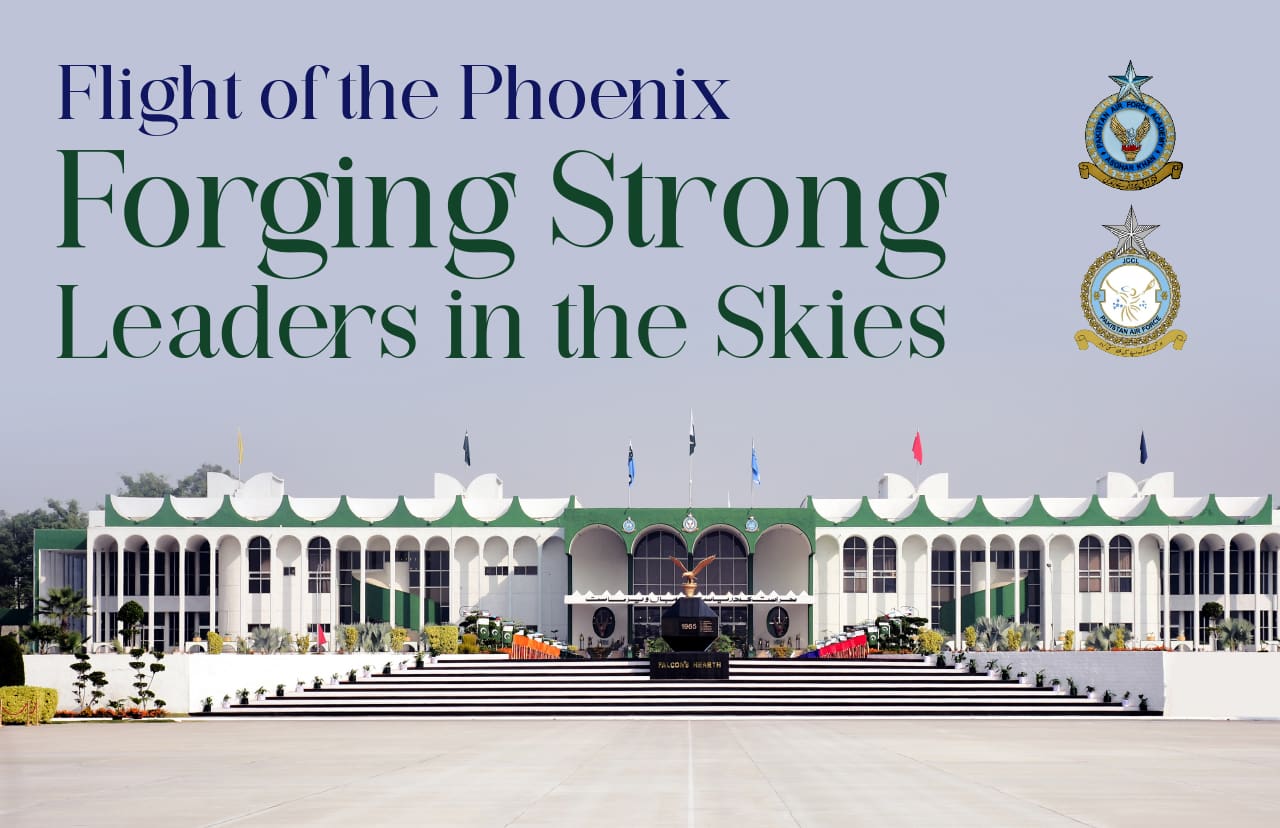Possessing good character is of paramount importance for officers in any military branch. This holds especially true for PAF, a force which has always upheld its commitment to being men of exceptional character. This virtue goes beyond just following orders; it forms the bedrock of PAF service and leadership and the search to better this aspect is always being sought out. The latest result of these efforts is the advent of Project Phoenix, a set of significant upgrades to its training regime. The innovative approach recognizes that producing exceptional leaders requires more than just technical expertise. Trainees now undergo comprehensive character-building exercises and leadership training modules that instil essential values such as integrity, resilience, and accountability. These upgrades aim to produce not only highly skilled aviators but also individuals who can lead with distinction and make critical decisions under pressure.
Men who live in the skies must first learn how to fly. The Pakistan Air Force has consistently maintained a strong emphasis on training its personnel, a cornerstone of its operational excellence. Recognizing that well-trained airmen are the backbone of any successful air force, PAF has invested significantly in cutting-edge training facilities and programs. From the initial stages of recruitment to advanced combat and technical training, the PAF ensures that its men receive comprehensive and rigorous instruction. This commitment to training not only enhances the individual skills and professionalism of its personnel but also elevates the overall operational capabilities of the Pakistan Air Force, making it a formidable force ready to defend its nation’s skies.
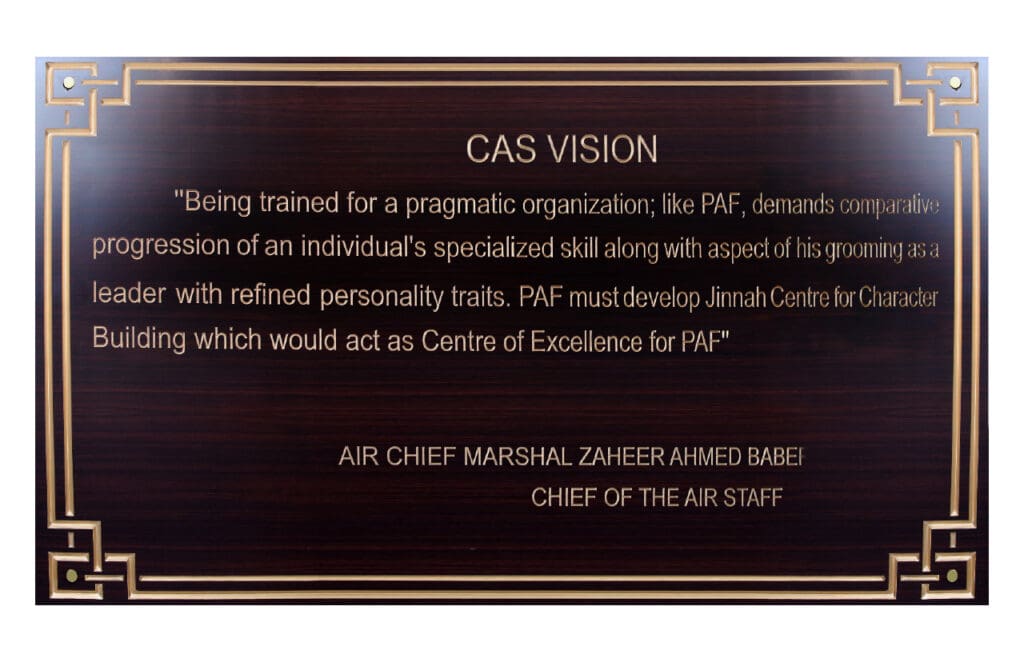
Air Chief Marshal Zaheer Ahmed Baber Sidhu NI(M) has been a driving force behind the modernization and enhancement of training programs within the Pakistan Air Force, prioritizing this aspect right from the beginning of his tenure. Under his leadership, the PAF has witnessed significant upgrades in all facets of training, leveraging the latest technology and strategic partnerships to provide world-class instruction to its personnel. Air Chief Marshal Zaheer Ahmed Baber Sidhu, NI(M) vision includes not only strengthening the core combat skills but also incorporating cutting-edge simulations, cyber warfare training, and drone technology integration, reflecting the evolving nature of modern aerial warfare. His unwavering commitment has led to ‘Project Phoenix’, a transformative initiative in officers’ training in alignment with the Next Generation Training Programme (NGTP). The primary objective of Project Phoenix is to nurture and empower “Leaders of Character and Competence” who are equipped to confront the challenges and realities of the 21st century. This endeavour encompasses a continuous assessment of contemporary training needs, the identification of deficiencies in the current training apparatus, and the implementation of a comprehensive strategy that touches upon crucial domains such as curriculum, human resources, and the training environments.
The editorial team of Second to None decided to learn about the advancements from the people at the helm of it all, the men at PAF Academy Asghar Khan. The journey started early in the morning with a few cups of strong coffee. As the bustling traffic of the metropolitan was gradually replaced by serene, quiet landscapes, the exact same sensation was could be felt internally. It was a pleasant two-hour drive before we reached Risalpur and were greeted by the trademark blue Land Cruiser which took us through the gate. After the necessary security checks, we finally entered the land which holds a special place in the hearts of thousands of cadets who have gone through it. It was a strange atmosphere. The base was a rare combination of being very active yet mellow, overall. The occupants walked at a slow pace but every single one of them knew exactly where they were going and for what purpose. It was intriguing.

After freshening up, we were taken to our first stop, the office of the Air Officer Commanding PAF Academy Asghar Khan, AVM Ghazanfar Latif. A pleasant, cordial man with a relaxed yet competent air. It was now apparent where the aforementioned atmosphere of the base originated from. In his office, lounging on sofas and munching on delicious appetizers, we were given our first insight on the immense changes that have been made in the last couple of years.
“Every single individual present in the first address of the CAS knew what his priorities were. And exactly like those before him, he wasn’t a man of words only, he immediately took action. The policies that have emerged in his time has brought us much farther than we were before. As is true on everything, the world is advancing exponentially. Most trainings and curriculums become obsolete after a year or two, replaced with a better, more relevant version. Its about time PAF catches up. This was the first spark that gave birth to Project Phoenix. The entire training paradigm of PAF was rejuvenated, using tangible, effective frameworks. These practices have been implemented at every level of the force and we’re already seeing the results.” AVM Ghazanfar explains.
After some more elaboration, he got up from the sofa and went to a window of his office. From the window, there was an expansive view of the Academy. There was new heavy machinery at work at several locations in the Academy, with construction workers present everywhere.
“And its not just in theory. According the vision of Project Phoenix, we’re upgrading our facilities, as well, making the infrastructure match the ambitious goals that we have set for ourselves.” He told us proudly.
We then walked to the office of Base Commander PAF Academy Asghar Khan Air Commodore Kashif Jamal.
He is the man who is on the frontlines of Project Phoenix. His humility is refreshing for a man of his calibre and dedication. With several high-level degrees, both national and international and a wealth of training experience across various platforms, Air Cdre Kashif is an exceedingly grounded man. He seems like a man of few words. That is, until you get him started on his current project. Then, the transformation from a quiet man to an excited, enthusiastic expert who cannot stop himself from exuding information is fascinating. He was the one who has given Project Phoenix its present form. Involved at every level of the program, it was obvious he is the perfect man for the job.
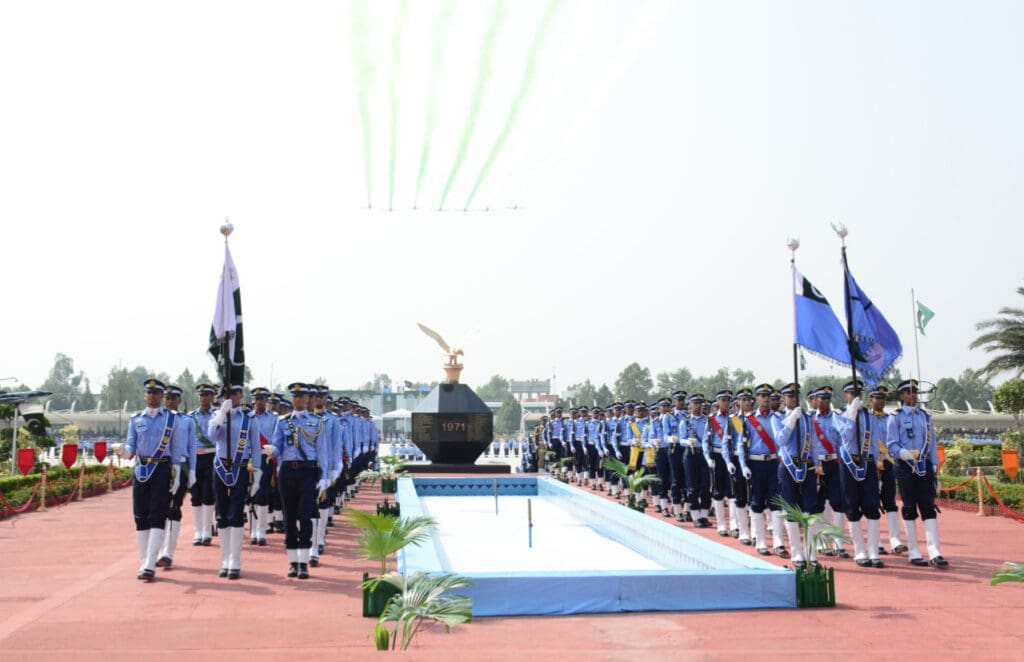
“As far as vision goes, everything stems from the vision of the man leading the force. I still remember the first address of the Air Chief. His emphasis was on value-based training for the entire force. I felt an intense wave of inspiration. If only I had known that I would play a part in the transformation that he foreshadowed. I truly believe that the work that I am doing here is the most purposeful of my entire career.
I can tell you, without a doubt that the leaders that will be produced in the new program will be like no other batch that PAF has seen before.”
A tall claim, by any measure. However, as he started breaking down the program, it was obvious where his confidence stemmed from.
“One of the most important aspects of Project Phoenix is the emphasis on training ‘Leaders of character and competence’. It is a simple approach but effective. The CAS is aware of the complex and disturbing evolution of warfare. The world has moved forward. Tech has advanced at a rate that whoever doesn’t constantly keep up with it, it leaves him behind. In our younger days, air warfare used to be simple. An aircraft would fly, detect another and there would be a dogfight. Whoever wins, wins. It was extremely simple. Now, warfare has evolved. It has gotten extremely complex. For example, even when two nations are in a state of co-operation, there could still be an underlying conflict between them. This is just a small example of the kind of warfare that 5th Generation warfare entails.
To tackle such a complex environment, PAF officers need to be cognitively aware at an another level.
This was the main reason for the conception of Project Phoenix.
There was a review of the entire training regime of PAF and gaps were carefully identified. The next step was devising strategies to improve trainings across crucial domains such as curriculum, human resources, and the training environment at the Pakistan Air Force Academy (PAFAA). Major steps have been taken to elevate the overall training standards of the PAF, including the recruitment of highly qualified PhD faculty at PAFAA.

One of the most important changes made to the courses is the duration. The duration of the course is now 4 years, instead of the 2 that it used to be. There were several reasons for this change. The first one of obvious. The subjects and areas of studies have increased manifold. There’s just so much more to cover now as compared to even a decade ago. In order to be a good leader and officer, one needs to study subjects like artificial intelligence, operational research and so on. Subjects of such nature were given very little attention previously. We have rectified that. This, of course, requires much more time.
The second reason is aligning the course with the rest of the world. We used to have a two-year degree named Aviation Sciences. There’s no such degree in the world. Which made it much harder for graduates to continue their studies abroad because the degree had no recognition? Now, in line with the vision of the CAS, the title has been changed to Aviation Management, which is the usual and accepted title of a course of this nature all over the world. We are also in talks with international bodies to recognize the degree and the process will be complete, hopefully. This will mean that our officers will be able to pursue further studies in institutions all over the world, a door that was closed on them before.” He explained.
Air Cdre Kashif takes a pause and turns around in his chair a bit. The wooden board directly behind him has a list of his predecessors. He gives the list a contemplative look.
“I have never thought for a second that my training, or more importantly, my trainers didn’t give me everything they had. I got the best of the best. However, I know for a fact that this is exactly what they would have wanted, for us to improve on their work, to carry forward their legacy of producing the best officers possible for the nation.”
Air Cdre Kashif then takes us for a tour of the Academy and walks us through the upgrades that are underway. We travel in a dark blue Land Cruiser 94 model, which was surprisingly well-maintained for a vehicle that has been on the road that long. Air Cdre Kashif kept breaking down the new program. He explained how the Phoenix project has the PITO model at its roots. PITO is a framework which starts from the personal skills, then the Inter-personal skills, then it teaches you how to operate in a team and finally how to be an asset at an organizational level. Let’s break this concept down a bit.
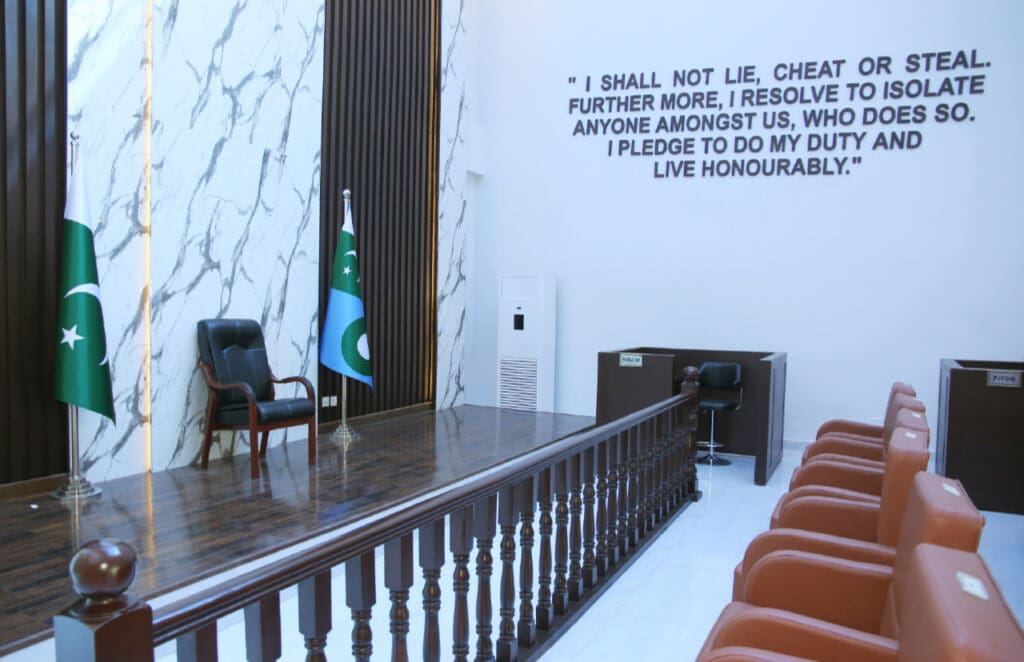
Personal Skills (P) is where you hone your individual prowess. Whether you’re training to be a pilot, ground crew, or any other role, you’re expected to excel in your specific skill set. For pilots, it’s all about finding yourself, setting personal goals, perfecting those flying manoeuvres and acing those mission-critical tasks.
Interpersonal Skills (I) teach you how to communicate clearly and efficiently, whether you’re talking to your fellow crew members or coordinating with other branches of the military or allied forces.
Teamwork (T) is the heartbeat of air force operations. Whether you’re in the cockpit with your fellow crew members or on the ground collaborating to maintain and prep aircraft, teamwork is everything. Training in this realm focuses on building trust, cohesion, and collaboration among your team members.
Organizational Skills (O) come last but are crucial. Organizational skills training delves into leadership development – because in the air force, you’re not just a team member; you’re also potentially a leader responsible for making those crucial strategic decisions.
“In the new curriculum, you start with personal skills in the first term and as you progress through your training, you go through each stage, studying organizational skills in the last terms. It’s a complete package, with each stage being a prerequisite of the next one,” explains Air Cdre Kashif. The team was then given a tour of the facilities being upgraded throughout the base. We started with the pool, with its crystal clear water and impressive length. Next was the gym. As Air Cdre Kashif gave us a rundown of the new additions, he explained the new paradigm around fitness for the new cadets.
“I have personally conducted a lot of research around the mental development of cadets. One thing stands out, which is crucial in the early days of training – physical. Physical fitness. It has been proven time and again that the performance of cadets, in the present and the future, has a deep connection with physical fitness. And we also know that the cadet who gets used to being fit at this age will never be able to go back to a lazy life. Our instructors told us something that made me very proud recently. A female cadet was able to pull off 46 push-ups in under a minute. Now, that is impressive. And the competition helps, too!”
Air Cdre Kashif stood in front of a mirror, saw his reflection, sized himself up and made a face. “I’ve been coming here, too, it’s about time I stop slacking off”, he said jokingly. “The good part is that we now have a curriculum for fitness, its not random. Cadets need to fulfil basic milestones of fitness and it’s a part of their formal training.”
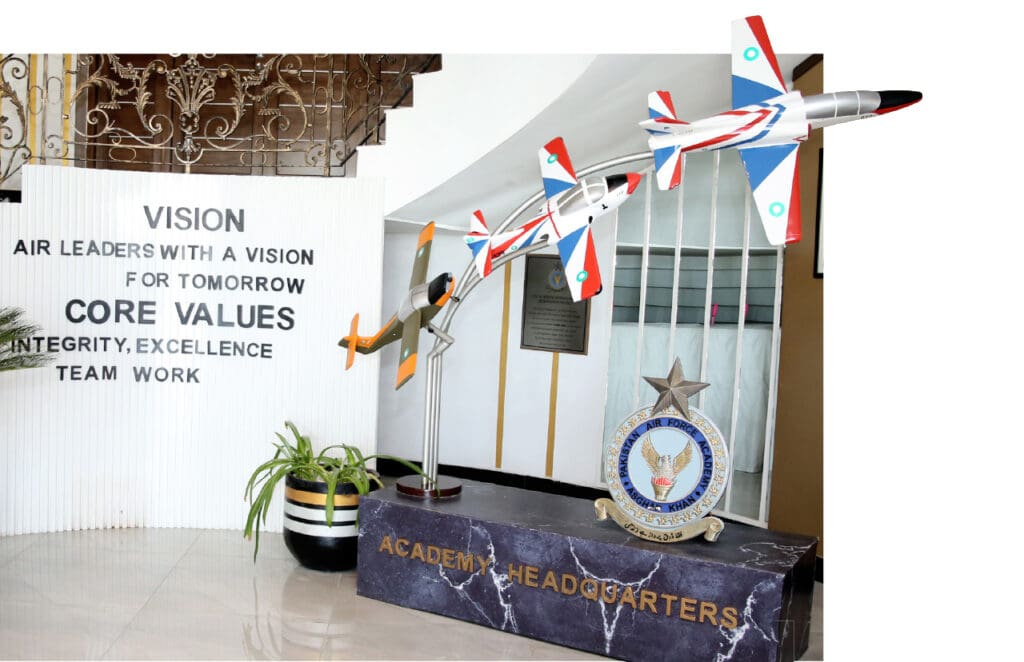
When asked about how the selectors ensure that everybody has a fair chance to enter the force, he smiled.
“I’d like to explain that with another memory that made me very happy. When I was an instructor in the Academy, I had a cadet come up to me after his first flight. He couldn’t stop beaming! I asked him what he had on his mind. He was a bit bashful at first but then, confided what was making him so happy. He told me that before flying the plane, he hadn’t even ridden a bicycle! Can you imagine?! So, yes, I can happily say the selection process is open to all. The tests are digital, there’s almost zero human involvement. Recently, we are getting a high number of female cadets, all of whom are performing excellently. We also have quotas for Baluchistan, Gilgit Baltistan and other remote areas.”
We were then taken to hub of Project Phoenix, the Jinnah Centre for Character and Leadership. Pakistan’s first Character and Leadership Centre, the body is a central/key component of the Air Chief’s development strategy. This premium centre of excellence not only offers institutionalized character and leadership development training for PAFAA trainees, it also provides a sustainable ecosystem for the entire spectrum of training in PAF. JCCL is built on the belief that living a life embedded in PAF’s core values is the path to leadership of character and competence – putting integrity to practice, striving for excellence, and lifting others through teamwork.
We are greeted by Deputy President of JCCL, Air Cdre Salman Mahmood. A tall, soft-spoken individual with sagacious, greying hair, he had an aura of a man who had complete control of whatever assignment he had committed to. He gave us a tour of the centre while further explaining Project Phoenix to the team.
In the lobby, we were greeted by a dynamic in lay in the centre of the lobby. It was the visage of a whirling Dervish, with a flaming torch in one hand and a sword in the other. He is surrounded by ten stars. As explained by Air Cdre Salman Mahmood, this emblem is the perfect embodiment of Project Phoenix. It contains a deep, fascinating philosophy. The whirling Dervish is inspired by Rumi’s visage of man of character, the same image conjured up by Allama Iqbal in his archetype of ‘Mard-e-Momin’. The Dervish whirls, in his eternal dance of an ideal life, the torch in his left hand, a beacon of enlightenment and a sword in his right, depicting unrelenting might. The ten stars that sway with him represent the ten attributes that are the crux of Project Phoenix. These attributes are:

- Character
- Warrior Ethos
- Transcendence and Temperance
- Time Management and Discipline
- Team Work
- Mental Agility
- Effective Communication
- Mental Robustness
- Social Intelligence
- Organizational Safety Management
“One of the most important facets of the program is training the trainer. Previously, there was no such program. The trainers were hired based on their technical prowess and that is usually what they passed on to the trainees. Now, with Project Phoenix, the first courses that we started were all ‘Train the Trainer’ courses. It was decided that since every instructor was involved in the courses, thus the equal onus should be placed on everybody. The basic tenet of the program lies in the ten attributes that we have already discussed. These attributes must be infused in all aspects of training. The trainers must act as role models to the cadets and, through their teaching and behaviour, ensure every cadet has the prescribed traits. It is so intricate that the instructors not only does he have to identify which trait needs to be infused in which lecture, he also needs to identify how to infuse the trait in the respective lecture,” said Air Cdre Salman Mahmood.
The JCCL was well-equipped for the task. Our first stop was state-of-the-art labs with rapid internet connections, which are used to do 360-degree assessment of the trainees, every 6 months, monitoring their progress through the program, amongst other tasks. The library on the second is well-equipped with books on a number of topics and a Jinnah Corner, with dozens of books on leadership and character. There were different research labs which were used to find ways to continuously improve the program. There was also an Honour Council, a room dedicated to conduct trials of trainees who have been charged of misconduct. The quote ‘I shall not lie, cheat or steal. Furthermore, I resolve to isolate anyone amongst us, who does so. I pledge to do my duty and live honourably.’ is mounted on right wall of the room, a commandment that all PAF men follow.
At the end of our tour of the impressive centre, we entered a huge conference hall. Unbeknownst to us, there was a training session underway, headed by none other than Air Cdre Shabbir Ahmed AKA Shabbir Angel. That is when the team found that Shabbir Ahmed is the President of JCCL. The founder of Rashidabad, Alamabad and Younasabad, there are a very few who have not heard of the enigmatic life of Shabbir Angel. The fact that the body was presided over such a figure tells us not only of the importance of the body, but also predicts the future contributions that JCCL will make to the force.
The team had reached the end of the official tour. We bid our farewells and made our way to the exit. As we passed in front of the sleek Air Warrior Memorial, we were filled with strange, pleasant visions of the past glory and a hopeful, promising future. The future of PAF was in good hands, there was no doubt about that.
